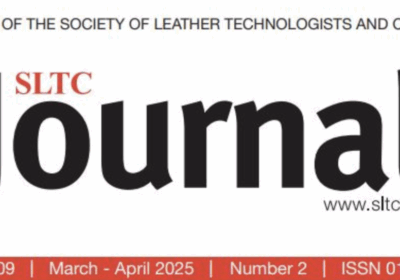
RIVISTA – LEATHER AGE MAGGIO 2025
◊ Letture presso la Biblioteca della Stazione Sperimentale Pelli ◊ Rivista di settore: Leather age

Da CPMC – Imperiale: “Dal Made in Italy al Will Make in Italy: valorizzare la tradizione, senza temere le sfide del futuro”
Il 2025 si apre con una riflessione che rappresenta, più che un esercizio teorico, una…

LEATHER UPDATE n. 23/2025
Approfondimenti sulle attività di ricerca, formazione e ogni altra notizia rilevante per la filiera pelle.

Rivista – SLTC VOLUME 109 – MARZO APRILE 2025 – Numero 2
◊ Letture presso la Biblioteca della Stazione Sperimentale Pelli ◊Rivista tecnica: Journal of the Society of Leather…

FORMAZIONE – Accordo tra SSIP e Arsutoria School per supportare le imprese di filiera
Firmato l'accordo, di durata triennale, tra la Stazione Sperimentale per l'Industria delle Pelli e la…

Rivista – SLTC VOLUME 109 – MARZO APRILE 2025 – Numero 2
Questa pubblicazione viene edita dall'associazione britannica "Society of Leather Technologists and Chemists", le cui origini…

ITALIAN LEATHER RESEARCH SUMMIT 2025 – REGISTRAZIONE ALLO STREAMING
LINK DI ISCRIZIONE ALLO STREAMING QUI

Leather Update n. 22/2025
Approfondimenti sulle attività di ricerca, formazione e ogni altra notizia rilevante per la filiera pelle.…

L’EVENTO – La SSIP al Convegno “L’economia circolare e lo sviluppo territoriale”
La Stazione Sperimentale ha preso parte alla X edizione dell'Innovation Village, fiera evento sull’innovazione prodotta…

FORMAZIONE – A cura della SSIP gli incontri tenuti all’ITTE Galilei Galilei di Arzignano, in lingua inglese sulla spettroscopia infrarossa a trasformata di Fourier
Si sono tenuti, a cura della Stazione Sperimentale, gli incontri di formazione all'ITTE Galileo Galilei…
